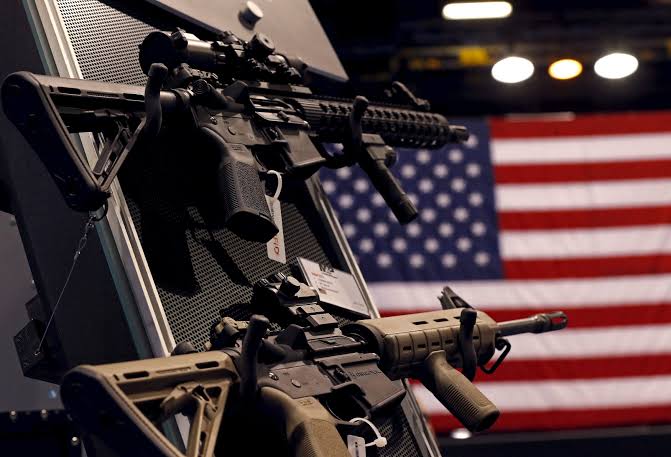Balancing Act: Navigating the Gun Control Debate in America
Gun control has been a contentious and divisive issue in the United States for decades. The debate revolves around striking a balance between protecting the Second Amendment rights of American citizens and addressing the alarming rate of gun violence. In a nation with a deeply rooted gun culture, finding common ground remains a formidable challenge.
The Second Amendment of the United States Constitution, ratified in 1791, guarantees the right to bear arms. It states, “A well regulated Militia, being necessary to the security of a free State, the right of the people to keep and bear Arms, shall not be infringed.” This simple yet powerful statement has been at the center of countless debates and legal battles. Advocates of gun rights argue that this amendment is a fundamental pillar of American liberty, enabling individuals to protect themselves and their property.
On the other side of the spectrum, proponents of gun control assert that the United States’ lax gun laws contribute to a staggering number of gun-related deaths each year. The country consistently ranks higher in gun-related deaths than other developed nations. According to the Centers for Disease Control and Prevention, there were over 39,000 gun-related deaths in 2019, making it a critical public health issue. All gun-related deaths, including suicide, murder, and accidents, are categorized as firearm deaths. In the US, suicides with firearms claim more lives than murders or accidents do.
There were 48,830 firearm-related fatalities in 2021, up 3,608 or 8% from the previous year.
With an estimated 120.5 weapons per 100 persons, the United States has one of the highest rates of firearm ownership per capita in the world. The difficulty of measures to restrict access to firearms is exacerbated by the high prevalence of gun ownership.
In the midst of this debate, striking a balance is crucial. Gun control measures are not inherently incompatible with the Second Amendment. A common misconception is that gun control advocates seek to eliminate all firearms, but, in reality, they are pushing for comprehensive regulations that ensure the responsible ownership and use of guns.
Universal background checks, for instance, are a common-sense measure supported by a majority of Americans. They aim to prevent individuals with a history of violence or mental health issues from obtaining firearms. Additionally, implementing waiting periods can help reduce impulsive acts of violence by allowing time for background checks to be conducted.
Another point of contention is the ban on assault weapons. Proponents of this ban argue that military-style rifles have no place in civilian hands, as they have been used in numerous mass shootings. Those who oppose the ban claim it infringes on their Second Amendment rights. Striking a balance here may involve allowing ownership of such firearms under strict regulations, such as mandatory safety training and secure storage requirements.
Safe storage laws can also be part of a solution. Many gun-related tragedies occur when firearms are not stored securely, leading to accidents, suicides, or thefts. Requiring gun owners to store their firearms in locked safes or with trigger locks can significantly reduce the risks associated with gun ownership.
Amidst the ongoing debate, it is essential to remember that gun control measures should be designed to keep firearms out of the hands of those who pose a danger to themselves and others while preserving the rights of law-abiding citizens. Balancing these concerns requires a nuanced approach and a willingness to engage in constructive dialogue.
In recent years, several states have taken the lead in implementing various gun control measures, highlighting the role of states in shaping gun policy. For example, California has enacted strict background checks, assault weapon bans, and magazine capacity restrictions. In contrast, states like Texas have adopted more permissive gun laws, emphasizing the diverse attitudes and perspectives across the country.
Ultimately, the path forward involves bipartisan efforts at the federal level to address gun control. It requires elected officials to put aside partisan politics and prioritize the safety and well-being of the American people. A comprehensive approach should focus on regulating firearm access for individuals who are at risk of harming themselves or others while respecting the rights of responsible gun owners.

In conclusion, the issue of gun control in the United States is a complex and contentious one. Finding a balance between upholding the Second Amendment and preventing gun violence is a challenge that the nation must face. Common-sense measures such as universal background checks, waiting periods, and safe storage laws can contribute to this balance. It is essential for policymakers, advocates, and citizens to engage in constructive dialogue and work together to create a safer and more secure future for all Americans.
References
- https://www.law.cornell.edu/wex/second_amendment#:~:text=The%20Second%20Amendment%20of%20the,regarding%20the%20Amendment%27s%20intended%20scope.
- https://www.usnews.com/news/best-countries/articles/2023-01-30/how-the-u-s-compares-to-the-world-on-guns
- https://usafacts.org/data/topics/security-safety/crime-and-justice/firearms/firearm-deaths/
Author: Prajwal Guleria a student at Lovely Professional University




